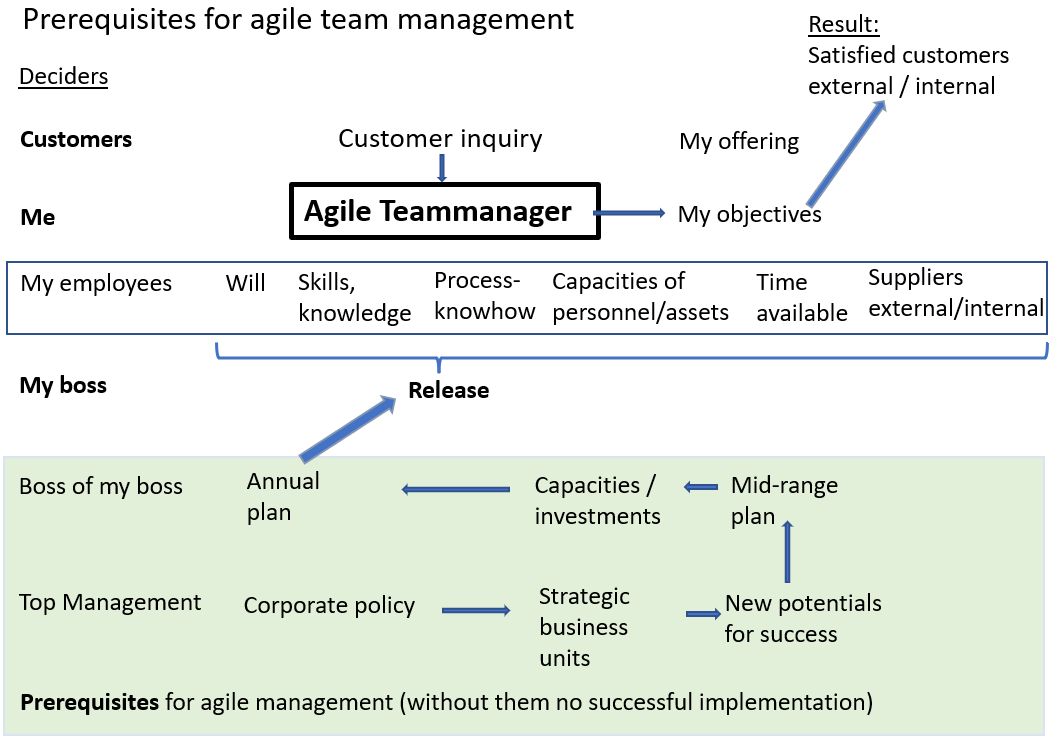Prerequisites for Agile Team Management
“Agility is the ability of a company to adapt its business model and organization to new market demands and emerging opportunities in a short period of time. In other words, being agile means being reactive, flexible and adaptable on the one hand, while being proactive and anticipatory on the other (Andreas Diehl).”
“Agile methods include methods such as Scrum, Kanban or Design Thinking. As project management methods, they serve to optimize existing processes in teams and companies. Source: Ebook from Haufe Akademie, Management Challenges 2022, p. 44/45)”. The same article states, “… it depends on a culture of trust that encourages employees to actively and quickly develop individual solutions at the direct point of contact with customers, instead of waiting for central guidelines or being paralyzed by too many and too rigid bureaucratic planning, checking and reporting activities.”
According to change consultants Dr. Kraus and Partner, “…agile leadership refers to a style of management that is intended to enable fast and flexible action and reaction to changing conditions as well as market and customer requirements. In this context, the inclusion of employees in decision-making processes as well as a far-reaching delegation of competencies and decision-making powers to employees or teams are seen as central success factors.”
If agile leadership is contrasted with the design elements of the management control system, it is necessary to ask which planning and control methods and systems are required in the whole company so that the teams can develop customer-centric (external and internal) solutions independently, fast and successfully without jeopardizing or even thwarting the overall success of the company.

If senior managers do not properly perform the tasks listed in the lower section of the figure, the foundations for the deployment of agile teams are missing. This is because appropriately trained employees are not available, buildings, machines, means of transportation and, above all, suitable hardware and software are lacking, and often also the money to pay for personnel, raw material and fixed assets.
Defined potentials for success and medium-term plans create the basis for agile management.
The success capabilities to be developed or expanded are to be derived from the corporate policy and the strategies. In the multi-year plan, the results to be achieved must be defined in a verifiable form and the necessary resources must be approved. Only this creates the prerequisites for reacting agilely to (mostly) urgent customer needs and still being able to realize the medium-term development goals.
Advance and feedback loops between operational planning and operational control are therefore an essential prerequisite if agility is to be possible (see also the post “main questions of each planning stage“).
